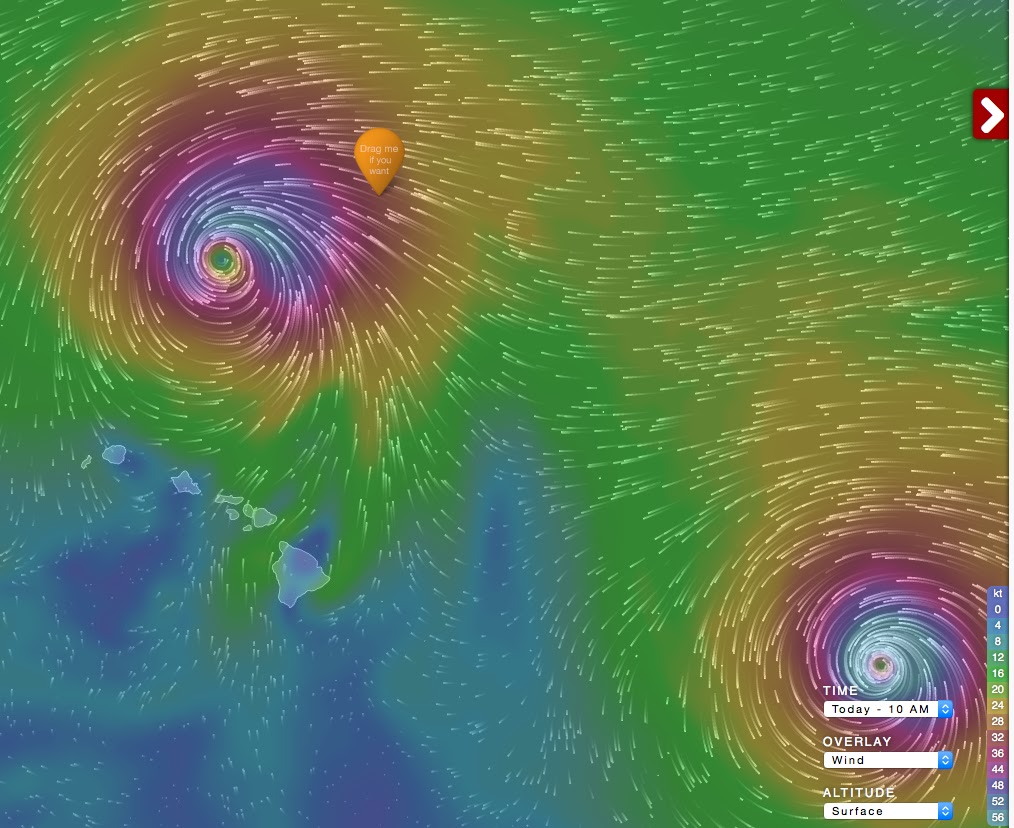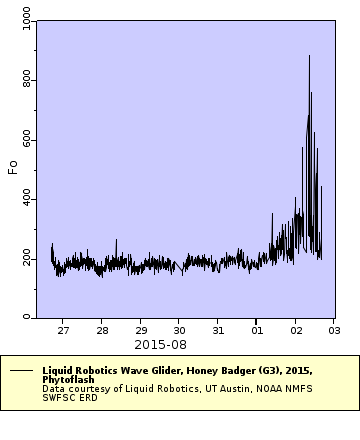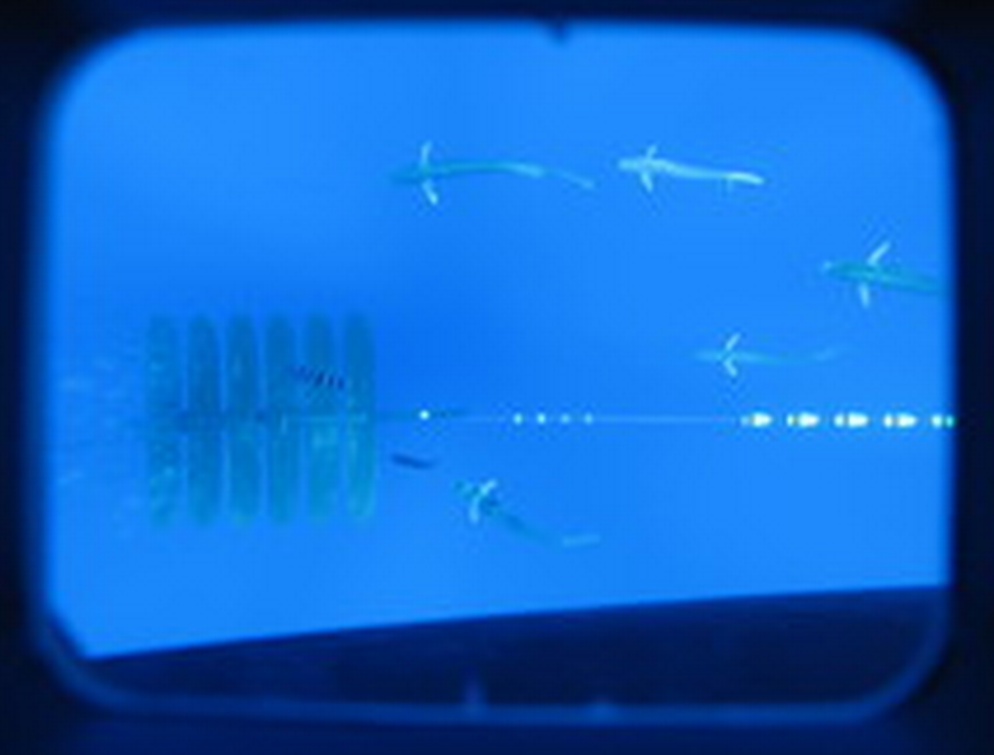 Here's the wind field from a NOAA model captured on windyty.com. It's pretty impressive and also shows another storm sneaking up from the south. Honey Badger is at the pointy base of the teardrop. Credit: Tracy Villareal.Earlier this summer, scientists from launched a wave glider nicknamed the Honey Badger off the coast of Hawaii with the Pacific Ocean in its sights. The mission of the Honey Badger is to sample the late summer chlorophyll bloom that develops near 30°N, with the goal of using the camera and LISST-Holo to try to identify species in the blooms and then follow the development of phytoplankton aggregates. These aggregates have recently been shown to be a significant part of the total amount of carbon that sinks to the deep sea.
Here's the wind field from a NOAA model captured on windyty.com. It's pretty impressive and also shows another storm sneaking up from the south. Honey Badger is at the pointy base of the teardrop. Credit: Tracy Villareal.Earlier this summer, scientists from launched a wave glider nicknamed the Honey Badger off the coast of Hawaii with the Pacific Ocean in its sights. The mission of the Honey Badger is to sample the late summer chlorophyll bloom that develops near 30°N, with the goal of using the camera and LISST-Holo to try to identify species in the blooms and then follow the development of phytoplankton aggregates. These aggregates have recently been shown to be a significant part of the total amount of carbon that sinks to the deep sea.
Honey Badger is brushing with Ignacio today and the conditions look rough. There are 20-24 foot waves, winds blowing at 35+ knots. The surface currents are pushing the wave glider north and combined with the wave-propulsion, Honey Badger is making about 2 knots speed over ground. That doesn't sound like much, last week we were becalmed and barely making 0.1 kts speed over ground. Big difference! A flourometer reading that shows a spike in the flourscence, which is the light emitted by chlorophyll and is an indicator of the amount of phytoplankton in the water. Credit: Tracy Villareal.
A flourometer reading that shows a spike in the flourscence, which is the light emitted by chlorophyll and is an indicator of the amount of phytoplankton in the water. Credit: Tracy Villareal.
All three fluorometers are showing an increase in fluorescence, which means that there may be more plankton in the area. The spiking is interesting to think about. There are few studies of how oceanic phytoplankton react to the passage of cyclones of this size. For obvious reasons, it's hard to be in the right place at the right time. One study in the Pacific during a large wind event noted a post-storm increase primary production, biomass and in the material sinking out of the euphotic zone by larger size fraction material. The LISST-Holo data will have such size fraction information (assuming it is working and gets home), and should be a pretty unique data set on the biological response at the surface. In a perfect world, we could clone Honey Badger and send it back into the wake of the storm, but that's a week or more in the wrong direction. Since we have not yet sampled an active bloom, we will have to stay on-mission and avoid such distractions (but it would be sooo much fun...).
You can keep up to date with what the Honey Badger will find at the project blog page: http://magihoneybadger.blogspot.com/
This project is a collaboration of The University of Texas Marine Science Institute, Liquid Robotics, Southwest Fisheries Science Center of National Oceanic and Atmospheric Administration with support from the National Science Foundation and the Geophysical Exploration Research Group at Texas A&M.
 An image looking down from the wave glider. The 5 big ones are mahi-mahi and the two smaller blue ones (one has stripes) are pilot fish. Credit: Tracy Villareal.
An image looking down from the wave glider. The 5 big ones are mahi-mahi and the two smaller blue ones (one has stripes) are pilot fish. Credit: Tracy Villareal.









